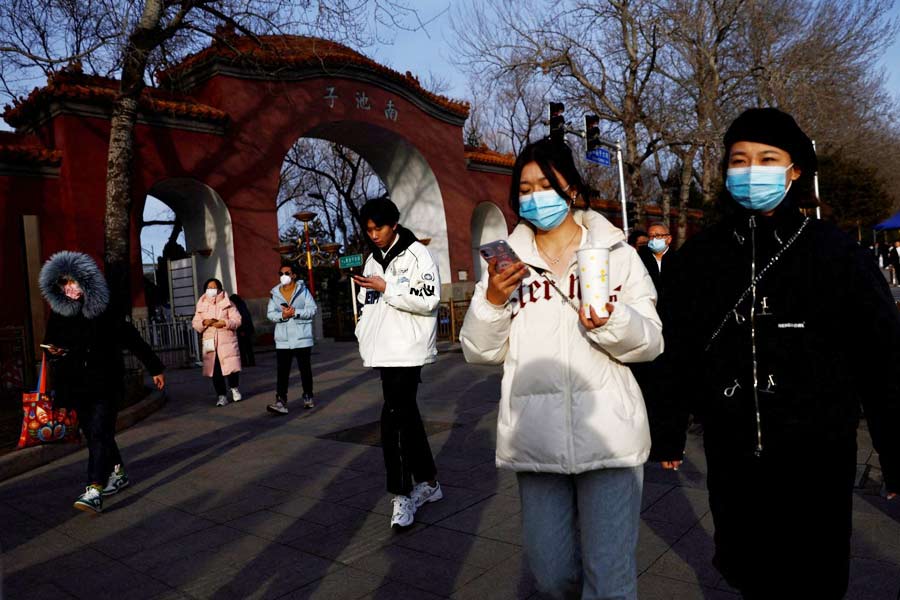Claiming no unusual or novel pathogens other than the seasonal ones were detected, China has sought to play down the global concerns amid surging cases of mycoplasma pneumonia and influenza flu, especially among children, in its southern and northern provinces.
Even when China’s widely-publicised exchange with the World Health Organisation (WHO) in response to the queries over the reports of surging cases of mycoplasma pneumonia and influenza flu triggered the worldwide alert, including in India, China said the spike in respiratory diseases was due to an ‘immunity gap.’ Both WHO and China have received global criticism for their non-transparent data/information sharing about COVID-19 and the world still has apprehensions over the emergence of the deadly virus in the Chinese city of Wuhan in 2019 which later spiralled into a massive pandemic resulting in deaths of and ill-health to millions of people across countries.
In response to the media reports in China about a spike in children’s hospitalisation, the WHO on Thursday made an official request to China for detailed information.
On Friday, a WHO statement issued in Geneva, quoting information it received from the Chinese health officials, said: “There has been no detection of any unusual or novel pathogens or unusual clinical presentations but only the aforementioned general increase in respiratory illnesses due to multiple known pathogens.” The WHO statement said that the requested data was provided (by China) when its officials held a teleconference with health authorities from the Chinese Centre for Disease Control and Prevention and the Beijing Children’s Hospital, facilitated by the National Health Commission and the National Administration of Disease Control and Prevention on November 23.
“The data indicated an increase in outpatient consultations and hospital admissions of children due to Mycoplasma pneumonia since May, and RSV, adenovirus and influenza virus since October,” the statement said.
After reviewing the Chinese response, the WHO said, it does not recommend any specific measures for travellers to China and advises against the application of any travel or trade restrictions based on the current information available on this event.
However, the WHO also quoted the Chinese response that said: “Some of these increases are earlier in the season than historically experienced, but not unexpected given the lifting of COVID-19 restrictions, as similarly experienced in other countries.” Chinese health officials, as quoted by the WHO, further stated that the rise in respiratory illness has not resulted in patient loads exceeding hospital capacities. But local media reports suggested otherwise.
State-run Global Times quoted China's National Influenza Centre as saying that in the week of November 13-19, “the positive rate of influenza virus detection continued to rise in the southern and northern provinces, with the A (H3N2) subtype predominating, followed by B (Victoria).” The newspaper quoted a parent who had brought her sick child to the Beijing Children's Hospital saying that the hospital was fully packed with over 300 people and that she had to wait for four hours to see a doctor.
“The situation in Shanghai is similar,” the daily’s report said, adding that major hospitals in Shanghai have been increasing pre-examination tests and medical scheduling, as well as enhancing internet-based outpatient services as part of their efforts to alleviate the pressure at hospitals and reduce wait times.
Quoting Wang Guangfa, a respiratory expert from Peking University First Hospital, the Global Times also said the “immunity gap” was the reason for the spike in numbers. “The prevalence of respiratory illnesses this winter seems more noticeable than in previous years, one of the key reasons being the rise of an ‘immunity gap’ resulting from decreased antibodies against these pathogens among the general public due to the protective precautions taken in the past three years,” Wang said.
“In general, persons should avoid travel while experiencing symptoms suggestive of respiratory illness, if possible; in case of symptoms during or after travel, travellers are encouraged to seek medical attention and share travel history with their health care provider,” it said.
“WHO is closely monitoring the situation and is in close contact with national authorities in China. WHO will continue to provide updates as warranted”, the statement said and added, “Mycoplasma pneumonia is a common respiratory pathogen and a common cause of paediatric pneumonia, and is readily treated with antibiotics.” WHO, however, had a number of recommendations for the Chinese side. It recommended that people in China follow measures to reduce the risk of respiratory illness, which include recommended vaccines against influenza, COVID-19 and other respiratory pathogens as appropriate.
It also recommended keeping distance from people who are ill; staying home when ill; getting tested and medical care as needed; wearing masks as appropriate; ensuring good ventilation; and practising regular handwashing.
Except for the headline, this story has not been edited by The Telegraph Online staff and has been published from a syndicated feed.











